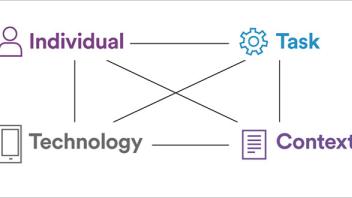Assistive technology can help kids with learning and attention issues use their strengths to work on weak skills areas. It also provides support so that children can handle tasks that would otherwise be difficult.
The IEP team at school decides which tools each student needs. Many teams make these decisions using something called the SETT Framework. Here’s how the overall process works.
Step 1: AT is considered using the SETT framework
Kids learn in different ways and at different paces.
It’s important to teach to each student’s individual strengths, skills and needs. This is true for all kids — not just kids with learning and attention issues.
7 Things to Know About the 1 in 5 with Learning and Attention Issues
S is for student’s strengths, current performance, and weaknesses in:
- Reading
- Math
- Writing
- Communication
- Learning and studying
- Vision, hearing, and mobility
- Activities of daily living
E is for learning environment
- How is the classroom physically arranged?
- What materials and equipment are used?
- How is instruction given (small groups, whole class)?
T is tasks for learning
- What is the class expected to be able to do?
- Which tasks are essential for your child to be successful?
T is for tools being used to help your child and other tools that may help
The IEP team considers the assistive technology range:
- Low/no-tech
- Mid-level tech
- High-tech
Step 2: Assessment
AT assessment is done to look at your child, the tasks he needs to perform, types of AT, and how they all work together
Step 3: The team develops a plan and a timeline
- Your child and teachers are trained in using the AT
- Data is collected on how well the AT is working
- The team discusses the data, adds the specific AT to your child’s plan, or considers other options
This article originally appeared on Understood.org , a free online resource for parents of children with learning and attention issues. Reprinted courtesy of Understood.org © 2018 Understood, LLC. All rights reserved.


